1.
Introduction
In this note we consider the following magnetic, quantum Euler equations:
in the unknowns (ρ,J):Rt×R3→R⩾0×R3, representing the charge and current densities of a positively charged quantum fluid, interacting with an external, time-independent magnetic field B. The third order nonlinear term in the right hand side of the momentum balance encodes the quantum correction, while J∧B is the magnetic force associated to the field B (we are neglecting here the self-induced electromagnetic field). We assume B=∇∧A for some real-valued, divergence-free potential A. Finally, P(ρ) is a barotropic pressure term, which assumes the form P(ρ)=γ−1γργ, with γ>1. From now on, we focus without loss of generality only on forward-in-time solutions (i.e., defined for t⩾0) and we denote the initial data at time t=0 by (ρ0,J0).
1.1. Physical background and motivations
System (1.1), as well as suitable variations, arise in the description of hydrodynamic models in which the quantum statistic becomes relevant at mesoscopic/macroscopic scales, which happens when the thermal de Broglie wavelength is comparable to (i.e., larger than or equal to) the average interatomic distance [1]; important examples include superfluidity [2], quantum plasma [3], and nanoscale semiconductor devices [4]. Since the constituent particles (e.g. fermions, such as electrons, and bosons as the Cooper pairs in superconductivity [5]) of a quantum fluid are typically charged, in many situations it becomes necessary to account for electromagnetic effects in the hydrodynamic description. A relevant model is provided by the quantum Euler-Maxwell equations, which describe the dynamics of a positively charged quantum fluid interacting with its self-induced electromagnetic field, see [5,6,7,8] and references therein for a comprehensive analysis.
On the other hand, as in the classical Ginzburg-Landau theory of superconductivity, the presence of an external magnetic field (especially of large amplitude) can drastically affect the behavior (both dynamical and at equilibrium) of a quantum fluid, even when the self-generated electromagnetic field may be neglected. In this perspective, we mention the work [9], which deals with a quantum fluid model for spinning fermions under the influence of an external electromagnetic field and discusses several applications, including quantum X-ray free-electron lasers and micro-mechanical systems. We also point out that in [9] the quantum fluid equations are not only introduced as effective model, but they are also formally derived from a microscopic, many-body description. In fact, an important issue in hydrodynamic and condensed-matter physics concerns the possibly rigorous derivation of effective equations from first principles. In this direction we mention [10], which gives a rigorous derivation of the incompressible 2D Euler equation from the von Neumann equation with an external magnetic field, and [11] where a 3D quantum fluid model with self-induced electromagnetic field is derived from the bosonic Pauli-Fierz Hamiltonian.
In the search for a rigorous derivation of a quantum hydrodynamic model, a preliminary (yet crucial) step is to have at hand a suitable solution theory, possibly at the whole finite-energy level (i.e., without requiring any extra regularity or smallness assumption on the initial data). Moreover, in order to deal with physically meaningful solutions, all the corresponding observables should be well defined.
Motivated by the above discussion, in this paper we aim to construct finite energy solutions to the magnetic quantum Euler equations (1.1) (without restrictions on the size of the initial data) such that the magnetic force J∧B is well-defined. We will deal only with weak solutions, since this allows us to consider a wide class of (possibly large and non-smooth) magnetic fields, see Remark 2.2.
1.2. Rigorous setup and the notion of finite-energy, weak solution
System (1.1) admits two quantities that are formally preserved along the flow: the total charge ‖ρ‖L1=‖√ρ‖2L2 and the total energy
where Λ:=J√ρ and f(ρ):=ργγ is the internal energy density. Observe that, for γ⩽3, we have f(ρ)∈L1(R3) whenever √ρ∈H1(R3). We restrict to the subcritical regime γ<3, while the critical case γ=3 requires a slightly finer analysis, which for concreteness will not be addressed here. Then, in view of System (1.2), the natural finite-energy condition for solutions to System (1.1) is
We work in a quasi-irrotational framework. More precisely, for almost every time we require the generalized irrotationality condition
to be satisfied as an identity in D′(R3). In order to clarify the meaning of the above condition, consider a smooth solution (ρ,J) to System (1.1), for which we can define the velocity field v through the relation J=ρv. A direct computation then shows that System (1.3) is equivalent to the identity
which implies in particular that the relative velocity field vA:=v+A is irrotational outside vacuum, namely ∇∧vA=0 on {ρ>0}. On the other side, condition (1.3) is compatible with the occurrence of quantum vortices, namely solutions such that vA has non-zero (quantized) circulations around a vacuum region. Formation of vortices plays a fundamental role in the study of quantum fluids [12], hence the importance of developing a theory which embodies solutions carrying a non-trivial vorticity.
Our last requirement is that a solution to System (1.1) must be regular enough to provide a meaning (e.g., local integrability) to the magnetic force J∧B. It is worth pointing out that the finite-energy condition alone does not provide a priori a well-defined magnetic force. Indeed, by Sobolev embedding and Hölder inequality,
which guarantees that J∧B is locally integrable only when B∈L3loc(R3). We will be able instead, by means of suitable a priori space-time dispersive estimates, to deal with magnetic fields that are almost finite-energy, namely B∈L2+(R3).
As anticipated, the goal of this note is to show the existence of global in time, finite-energy, weak solutions to System (1.1), without assuming any smallness condition on the initial data. Motivated by the above discussion, we provide the rigorous notion of solution. To this aim, observe that the convective term in the momentum equation can be rewritten as
while the quantum term can be written in divergence form as
Definition 1.1. Let 0<T⩽∞, ρ0,J0∈L1loc(R3). We say that (ρ,J) is a finite-energy weak solution to System (1.1) on the space-time slab [0,T)×R3, with initial data (ρ0,J0), if the following conditions are satisfied:
(i) (finite energy hydrodynamic state) there exists a pair (√ρ,Λ), with √ρ∈L∞loc(0,T;H1(R3)) and Λ∈L∞loc(0,T;L2(R3)), such that ρ=(√ρ)2, J=√ρΛ;
(ii) (continuity and momentum equations - weak formulations) for every η∈C∞c([0,T)×R3) and ζ∈C∞c([0,T)×R3;R3),
(iv) (well-defined magnetic force) J∧B∈L1loc((0,T)×R3);
(v) (generalized irrotationality condition) for a. e. t∈(0,T), the generalized irrotationality condition (1.3) holds true in D′(R3).
When T=∞ we say that the solution is global.
2.
Connection with magnetic nonlinear Schrödinger (NLS) and main result
The quantum term in System (1.1) induces a quadratic dispersion relation in the irrotational part of the flow, as can be readily verified by linearizing around a constant state. Nevertheless, this enhanced dispersion (comparing with the linear dispersion of the classical Euler equations) is still not sufficient to directly derive suitable a priori bounds and prove the existence of solutions for large, finite energy initial data. We exploit instead a suitable wave-function dynamics associated to System (1.1). More precisely, if a complex-valued function ψ satisfies the magnetic NLS equation
where ΔA:=∇A⋅∇A:=(∇−iA)⋅(∇−iA)=Δ−2iA⋅∇−|A|2 is the magnetic Laplacian, then its Madelung transform
formally solves System (1.1). Suppose indeed that we can write ψ=√ρeiθ so that J=ρ(∇θ−A) for smooth functions ρ,θ, with ρ>0. Substituting this ansatz into the NLS (2.1), and separating real and imaginary part, we obtain a system of equations that reduces after some manipulations to System (1.1).
The connection between quantum fluid models and wave-functions dynamics governed by Schrödinger-type equations, originally observed in the seminal work by Madelung [13], has been widely exploited in the mathematical literature: we mention [14,15] and [16,17,18,19,20], see also [21] and references therein.
In particular, the existence of global, finite-energy solutions for the 3D quantum Euler equations (i.e., System (1.1) without the magnetic component J∧B in the momentum balance) has been proved in [14], for arbitrarily large initial data and allowing for vacuum. In this case, the corresponding wave-function dynamics is governed by the semilinear NLS
for which a satisfactory well-posedness theory at the finite energy level (i.e., H1-regularity) is available (see e.g., the monograph [22] and references therein). Still, the precise construction of the hydro-dynamic variables and the rigorous derivation of the quantum Euler equations require a fine analysis, based upon the polar factorization technique (see the discussion in Section 3). Existence of global weak solutions has been also proved for aforementioned quantum Euler-Maxwell equations [23], see also [24]. The wave-function dynamics is given now by a nonlinear Maxwell-Schrödinger (MS) system, for which well-posedness is available only above the finite energy level [25]. Still, relying on the existence of finite energy weak solutions to MS [26] and suitable a priori estimates, in [23] the quantum Euler-Maxwell equations are derived by directly working with the weak formulations. This approach has been adopted in [18] for the quantum Euler equations, and is in turn inspired by ideas in [27,28]. Here, we will follow an analogous strategy.
In order to state our main result, we first need some assumptions. Concerning the magnetic potential A, we impose the following condition:
As anticipated, in terms of the magnetic field B=∇∧A we are just above the finite-energy level B∈L2(R3). The extra integrability assumption on A will be crucial to obtain the appropriate a priori estimates (see Proposition 3.1) for weak solutions to the magnetic NLS (2.1). In addition, Condition (2.4) guarantees [29, Lemma 2.4] that the magnetic Sobolev space
coincides (with equivalence of norms) with the classical Sobolev space H1(R3). Since the energy of the magnetic NLS (2.1) is given by
we then deduce (in the sub-critical regime γ<3) that H1(R3) is the energy space for Eq (2.1).
Concerning the initial data (ρ0,J0), we impose that they are the Madelung transform of a finite energy wave function:
The above condition is natural from the quantum mechanics perspective, as it is equivalent [30] to assume that the (relative) initial velocity field v0,A has quantized circulations around vacuum, namely
for any closed, smooth path in ρ>0.
We are now able to state our main result.
Theorem 2.1. Assume that the magnetic potential A and the initial data (ρ0,J0) satisfy Systems (2.4) and (2.6), respectively. Then there exists a global, finite energy weak solution to System (1.1), in the sense of Definition 1.1.
Remark 2.2. The existence of strong (i.e., continuous in time) solutions to System (1.1) is unknown in general. Indeed, the typical dispersive bounds, such as Strichartz estimates, which would guarantee the well-posedness in H1(R3) of the corresponding NLS (2.1) are available only for some restricted class of magnetic potentials, satisfying either smoothness, smallness, or non-resonant assumptions (see e.g., [31,32,33] and references therein).
Remark 2.3. In the case of the quantum Euler-Maxwell equations, the L∞-bound (suitably averaged over time) on A follows by means of the dispersive estimates for its wave-type evolution, as soon as the initial magnetic potential is slightly more regular than finite energy. Here, dealing with a fixed, external magnetic field, such condition is imposed a priori. An interesting open question that arises is whether the integrability assumption on A could be weakened without imposing any extra smallness, regularity or spectral condition. This would require new technical ideas to deal with the derivative term 2iA⋅∇ in the expansion of the magnetic Laplacian.
The solution constructed in Theorem 2.1 will be obtained as Madelung transform of a time-dependent wave-function satisfying System (2.1). As such, the quantized vorticity condition will be automatically satisfied at (almost every) time.
Finally, we mention that it would be possible to prove a weak-stability result for System (1.1), in the same spirit of [23,Theorem 1.3]. For the sake of concreteness, we do not pursue this direction here.
The next section is devoted to the proof of Theorem 2.1. We preliminary fix some notations. We will write A≲B if A⩽CB for some C>0, and A≲kB if the above constant C depends on the parameter k. Given s>0, p⩾1, we denote by Hs,p(R3) the classical Sobolev (Bessel-potential) space. Given p∈[1,∞], T>0 and a Banach space X, we write LpTX to denote the Bochner space Lp((0,T);X).
3.
Proof of the main result
Our starting point is the existence of a global, finite energy weak solution
to the magnetic NLS (2.1), with initial data ψ0. This has been proved in [29, Theorem 1.2], where a wider class of rough, time-dependent magnetic potentials is actually considered.
We are going to show that the Madelung transform (ρ,J) of ψ, defined by System (2.2), is a global, finite energy, weak solution to System (1.1), in the sense of Definition (1.1). There are two main issues.
First of all, since the velocity field v is not well-defined on the vacuum regions, the hydrodynamic variable Λ, formally given by Λ=√ρv, needs to be carefully realized. To this aim, we briefly recall the polar factorization technique (see e.g., [24]). Consider the set
of polar factors of ψ. Given φ∈P(ψ), let us define
Since ∇Aψ=0 almost everywhere on {ρ=0} [24, Theorem 6.19], the above definition tells us that the Λ is uniquely defined, with Λ=0 on the vacuum. As a consequence, the identity J=√ρΛ and formulas (1.4) and (1.5) are rigorously justified, and we deduce that the energy (1.2) of the hydrodynamic state (√ρ,Λ) coincides with the energy (2.5) of the wave function ψ.
The second issue is related to the rigorous derivation of System (1.1) from the corresponding NLS Equation (2.3), which could be directly justified only for sufficiently regular (above the finite energy level) wave functions. Since we can not appeal to the H1(R3)-stability (recall indeed that the well-posedness in H1(R3) for System (2.3) is unknown in general, as discussed in Remark 2.2), we can not rely on any approximation procedure. We derive instead the weak formulations (1.6) and (1.7) of System (1.1) directly from the Duhamel (integral) formula of System (2.3). To this aim, we need a suitable a priori estimate, similar to [23, Proposition 3.1].
Proposition 3.1. For any T∈(0,∞) it holds the estimate
Proof. In view of the Koch-Tzvetkov type estimates [25, Lemma 2.4] and the classical inhomogeneous Strichartz estimate [34] for the Schrödinger equation, we deduce
Using assumptions (2.4) on A we get
Moreover, since γ<3, a direct application of Sobolev embedding, Gagliardo-Niremberg and Hölder inequalities yields
for some ε=ε(σ)∈(0,1). Since ‖ψ‖L∞TH1≲T1, we then obtain
which implies Eq (3.3), as desired. □
Remark 3.2. The above argument can be rigorously justified by considering a sufficiently regular ψ, for which the finiteness of ‖ψ‖L2TH12,6 is guaranteed, and then appealing to a standard density argument. Alternatively, one could exploit a bootstrap procedure as in [23, Proposition 3.1].
We can prove now that the pair of hydrodynamic variables (ρ,J) satisfies conditions (ⅰ)–(ⅳ) of Definition (1.1), with T=∞.
(ⅰ) Since the map ψ→(√ρ,Λ) is bounded (and actually continuous) [24, Lemma 5.3] from H1(R3) into H1(R3)×L2(R3), we then deduce from Eq (3.1) that
(ⅱ) The weak formulations of the continuity and momentum equations can be obtained following the same lines as in [23, Section 4]: The extra-integrability (almost L∞) on ψ provided by Eq (3.3), and the extra-regularity (above finite energy) on B assumed in (2.4) allow in fact to rigorously justify the derivation of Eqs (1.6) and (1.7) from the integral (Duhamel) formulation of the magnetic NLS (2.1).
(ⅲ) In view of Sobolev embedding, Hσ−1(R3)↪Lp(R3) and H12,6(R3)↪Lq(R3), for suitable p>2 and q<∞ such that 1p+1q=12. Then, for every T>0,
which implies in particular J∧B∈L1loc(R×R3).
(ⅳ) We start by observing that
which yields
On the other hand, given a polar factor φ of ψ, we have
Moreover, we have the chain of identities
Combining Eqs (3.4)–(3.6), we deduce that the generalized irrotationality condition (1.3) is satisfied for almost every time as a distributional identity.
The proof of Theorem 2.1 is complete.
4.
Conclusions
We have shown how to construct global, finite energy weak solutions to a quantum fluid system with an external (possibly large and non-smooth) magnetic field, following similar lines as in the case of the quantum Euler-Maxwell system. Analogous arguments can be also used to deal with the case when both an external magnetic field and the self-induced electromagnetic fields are taken into account in the dynamics of a charged quantum fluid. Finally, let us point out that the overall strategy exploited in this work appears to be versatile and could potentially be adapted to deal with more general dispersive hydrodynamic models, whose solution theory is still not well understood. A relevant example is provided by the Euler-Korteweg system
where k(ρ)⩾0 is the capillarity coefficient. System (4.1) arises, among the others, in the description of capillarity effects in diffuse interfaces [35]. The choice k(ρ)=14ρ leads in particular to the quantum Euler equations. Also, the Euler-Korteweg system is connected, through the Madelung transform, to a wave-function dynamics, given in this case by the quasi-linear NLS
where ˜k(ρ)=k(ρ)−14ρ. Comparing with the magnetic NLS (2.1), where the Laplace operator is perturbed by the derivative term 2iA⋅∇, in Eq (4.2) there appears a second-order term with non-constant and ψ-dependent coefficient, which makes it even harder to prove suitable dispersive estimates. In fact, the global well-posedness for the 3D Euler-Korteweg system is only known under the strong ellipticity condition ρ˜k(ρ)⩾c>0 at sufficiently high regularity (Hs with s>72), without vacuum, and for small, spatially localized initial data [36]. On the other side, it is conceivable that weak H1-solutions to System (4.2) can be constructed by means of compactness arguments and in turn that low regularity, weak solutions to the Euler-Korteweg system can be derived by exploiting the strategy presented here, which only relies upon dispersive estimates with loss of derivatives.
Use of AI tools declaration
The author declares he has not used Artificial Intelligence (AI) tools in the creation of this article.
Acknowledgments
The author would like to thank the anonymous referees for the useful suggestions. The author acknowledges support to INdAM-GNAMPA through the project "Local and nonlocal equations with lower order terms".
Conflict of interest
The author declares there is no conflict of interest.











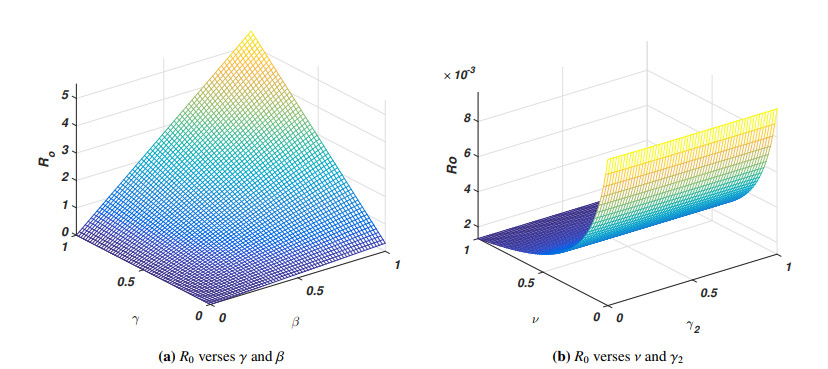
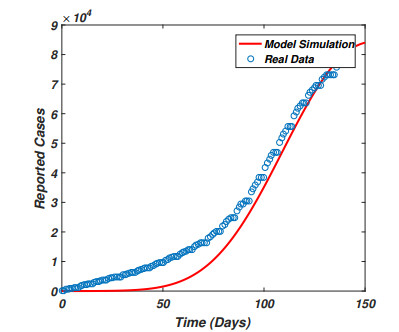
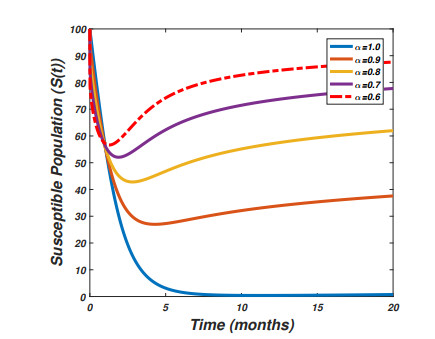
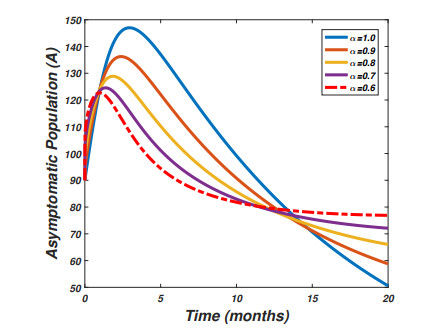
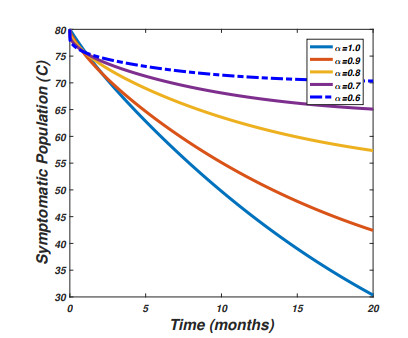
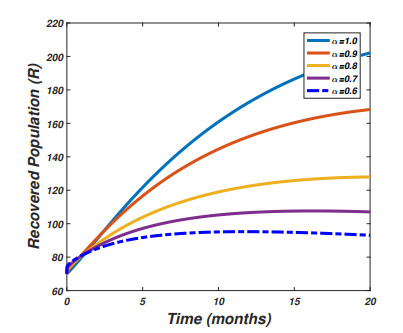


 DownLoad:
DownLoad: